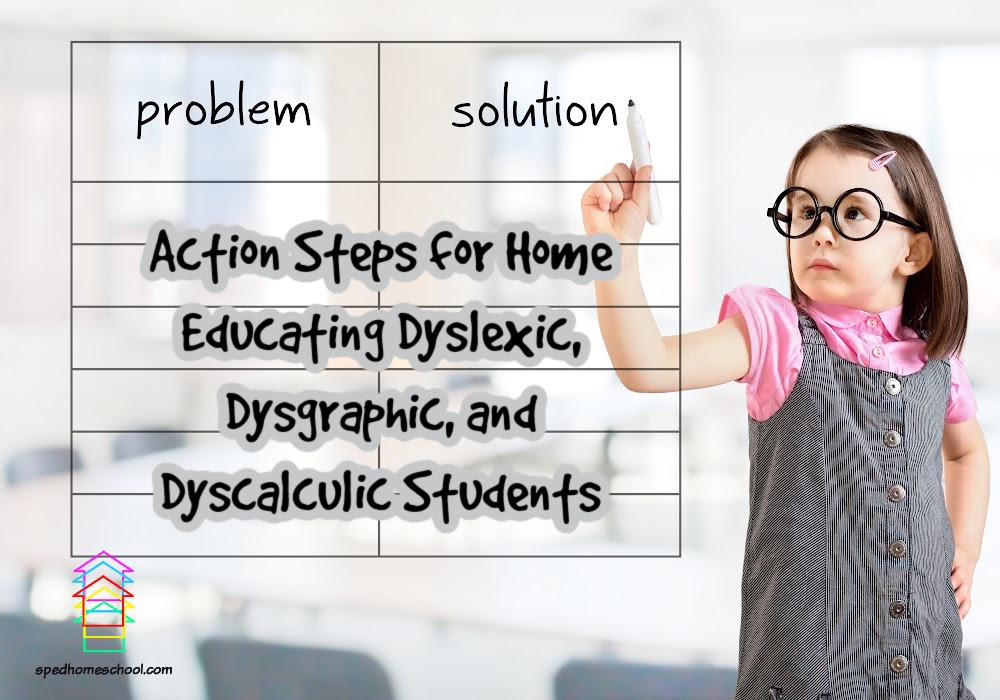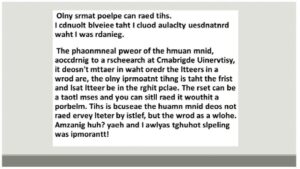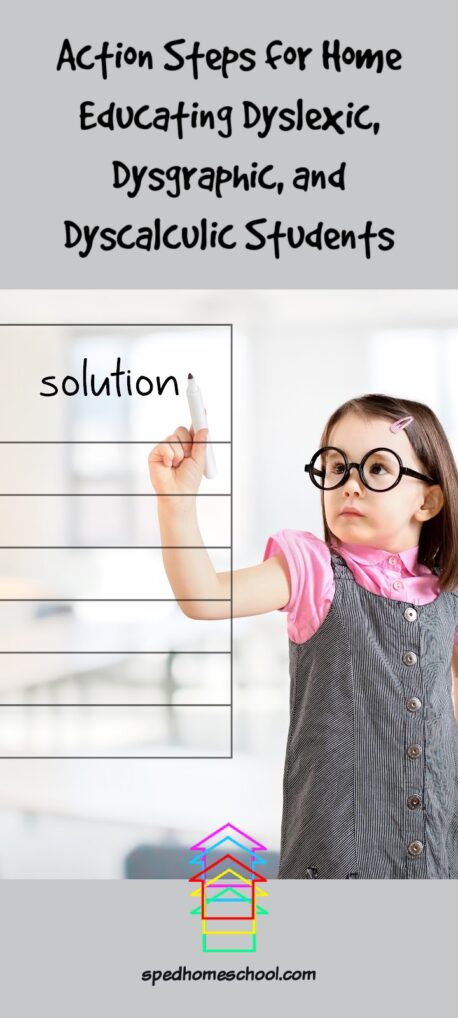
By Jan Bedell, Ph.D., Master NeuroDevelopmentalist,SPED Homeschool Board Member, Curriculum Partner, Consultant Partner, and Therapy Partner
This is a following-up to my previous blog on dyslexia, dysgraphia and dyscalculia. The basic information shared in that blog will help you understand the suggestions below as they relate to the neurodevelopmental (ND) approach.
Now that we are on the same page with the understanding that the symptoms need to be addressed so the brain works efficiently, we can move forward with tips to help a child that has any or a combination of the “dys” labels. Also note that a 15% off coupon is located at the end of this article for being a SPED Homeschool member and can be applied to any of our products you think may might be helpful in teaching your student.
Dyslexia
My previous blog listed dyslexic symptoms. Almost all children who come to us with this label were mixed dominant in their eyes and ears. Fortunately, this is something that can change and when it does, the individual experiences increased long-term memory and less emotionality and school stress.
Another key factor in academic success for a dyslexic is processing both visual and auditory information. Free Test Kit. Processing is your short-term memory and affects a person’s ability to hold sounds together to read phonetically. For more information about auditory processing and how to improve it, watch this video or order this
After you have looked into those factors, you need to be sure the eyes are tracking together and converging correctly so the correct information is going to the brain regarding the print in front of the person. All of these developmental factors and more that might affect someone with dyslexia can be checked by a trained NeuroDevelopmentalist through an inexpensive, in-person or zoom NeuroDevelopmental Screening. Information about each of these factors is also available on our YouTube or Rumble Channels called Brain Coach Tips.
When one of my children was struggling, I wanted to know what I could do TODAY to help. Of course, learning about dominance and processing is a good first step but easing the stress of reading practice is paramount as well. If the child’s processing score is less than 6, we recommend echo reading. I know, the first thing you are going to say is, “Isn’t reading with phonics the only “real” way to read?” Phonics is great! Let me repeat, phonics is a great way to teach reading if the individual has high enough auditory processing to handle it. If that is not the case, it is a frustrating experience for both student and teacher.
Read this text and then I will explain.

See, we are really sight readers. Once we know the word, we don’t ever sound it out again. Because of this sight word skill, having a large sight word vocabulary is an asset! Echo reading is where you read a couple of sentences and then the child reads the same two sentences after you. With this method, you work on word recognition, comprehension and reading expression all at the same time. I like to use this really sweet series of a family on a farm when recommending echo reading; Books for First Grade and Second Grade.
In addition to echo reading, you would work on auditory processing twice a day. When the child can do a solid 5 and work close to 6 numbers on the auditory processing Free Test , you add phonics back into your routine. In the meantime, the echo reading takes the pressure off the child and also the negative mindset that “I can’t read.” When you add the phonics back in, the child has the best of both worlds – a good sight word vocabulary and a way to sound out unknown words. Watch this for more details.
Check out this additional resource for the Best Way to Teach Reading
Dysgraphia
Symptoms for this label can come from several different sources of brain inefficiency. If the eyes are not giving the correct information about where the line is, how can the child write on the line? If the pathways from the fingers to the brain are not working well, he will not be able to control the pencil. If the pencil grasp is not good, this also retards progress.
Interventions:
- Do deep pressure on the hand and arm to help build pathways.
- Check the eyes for convergence and tracking
- Consider a ND program so you can be equipped to help with central detail vision that makes it hard to see exactly where the line is. Central vision also affects the spacing between words and the inconsistent size of letters.
- CursiveLogic can also be used to teach cursive handwriting. This helps to keep letters more uniform because of proprioception (tactile awareness of where you are in space) that can compensate for visual inefficiencies.
Dyscalculia
Again, we need to look for how to address symptoms instead of focusing on a disability or difficulty.
- If the brain is not organized well at the lower levels, it is difficult to have organized thinking. So many times, we expect organized behavior from a disorganized brain (a brain that didn’t receive enough of the right kind of stimulation during developmental stages) and it becomes a frustrating experience for parents and teachers.
- Auditory processing (as mentioned above). When this is low:
- there is a struggle with logical thinking needed for mathematics concepts
- word problems are a struggle because the information is not held well in short term memory
- instruction of math concepts is hampered
- remembering all the steps to a more complicated operation like long division is a challenge
3. Long-term memory – if information is not being stored correctly for easy retrieval, it will be difficult to learn math facts and remember how to do certain operations
An ND’s view of math is divided into 3 distinct areas of abilities that are worked on independently:
Math Issue #1: Learning the meaning of a particular operation. What is addition? What does multiplication really mean?…
Intervention
Some parents are mistaken that a child shouldn’t move on to subtraction until they have mastered the addition math facts or on to multiplication until the addition and subtraction facts are solid. If you work on each math ability independently through AND methods, the mastery of math facts doesn’t hinder a child’s ability to progress in math concepts. We use Visual Circle Math (VCM) with 50% instruction. Children that are behind in math really don’t need to do full grade level math curriculums to get caught up to grade level. When you use VCM, students are presented with ways to see what each operation is and do the problems that are more grade level appropriate even before they know the math facts. This way they can catch up quickly and then join a grade appropriate curriculum for other aspects of math like time, temperature, and geometry. Be sure to include Visual Circle Math Additional Mastery Pages so you have enough practice for your child to master the current math concept while getting daily practice on all the previously mastered concepts. This is designed to be hands-on with the parent as the parent does every other problem for the child (50% instruction). This adds intensity to help the information stick and stops all potential mistakes the child might be inclined to make.
See the SPED Homeschool Review Crew unboxing and review videos of VCM to learn more.
Math Issues #2: Mastering the math facts. This is knowing the answer instantly of a particular random one digit problem. Ex. You see or hear 4 + 5 and 9 comes to mind immediately without thinking of a math family or a trick to subtract 1 from a double like 5 + 5.
Intervention
Mastery of math facts is the cornerstone of math. When a child knows their facts, math lessons go much more smoothly, and takes less time. We use The Rapid Recall System where the child sees, hears, says, and writes 5 math facts 14 times a day. This dynamic system only takes 6-7 minutes of “input” (putting information into the brain) and 1-3 minutes of “output” (checking to see if the information is coming out on paper quickly). Children report that after using this system that they really like math after all.
Math Issue #3: The ability to do word problems. This involves reading the problem, holding the information in short-term memory long enough to decide what is important as well as what operation is needed to solve for the answer.
Intervention
Work twice a day on auditory processing so the student can hold the information more easily.
Your children with “dys” labels don’t have to struggle the rest of their lives with these challenging symptoms. If the root cause is addressed with the right kind of stimulation, the child will make progress and build confidence along the way. For more help in where to start, contact: office@BrainSprints.com
Use coupon code: SPEDFriend for any products that might be helpful for your child.

